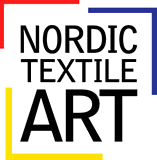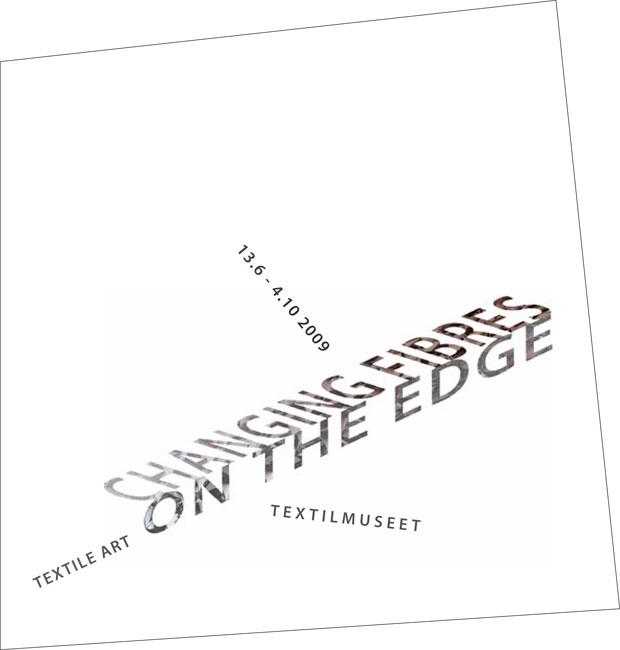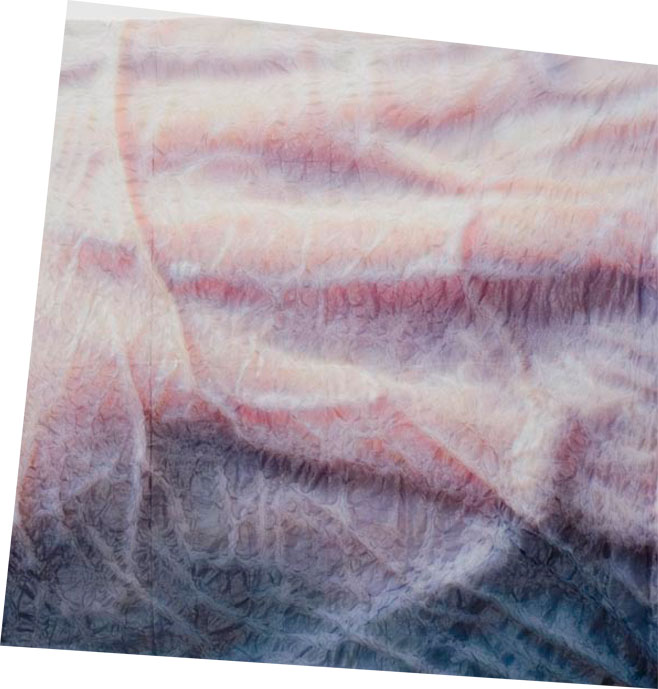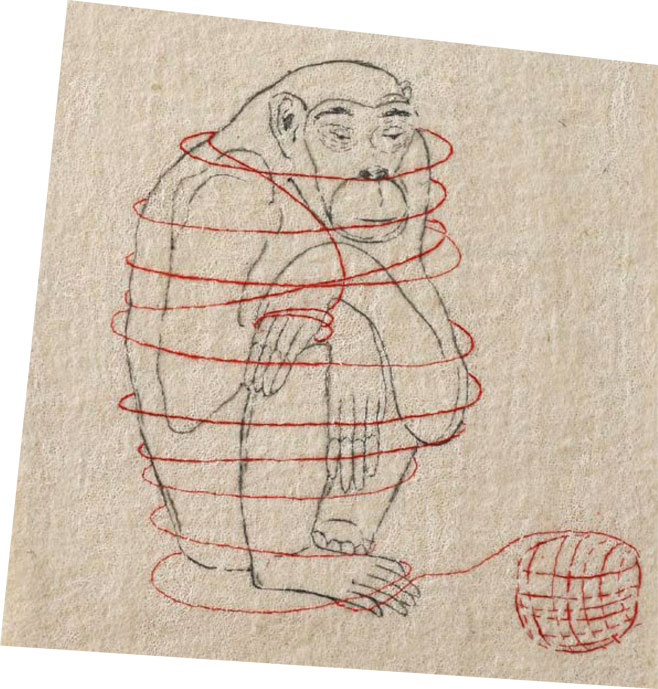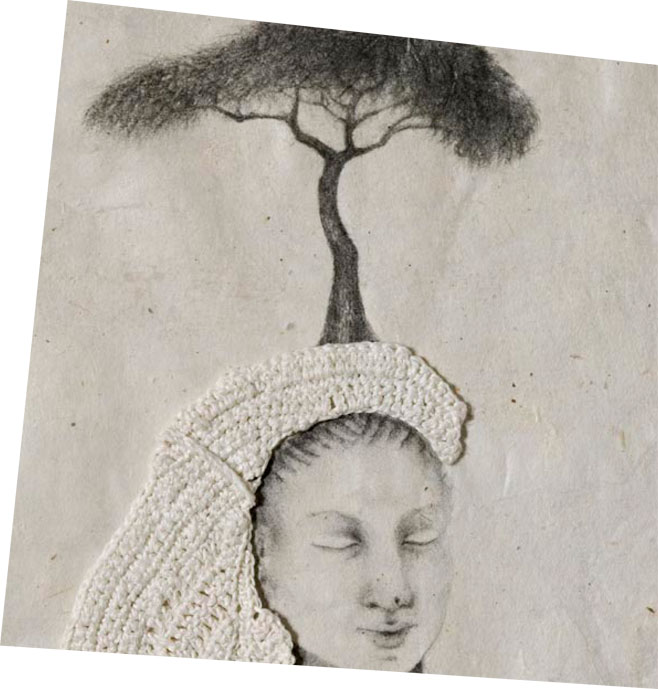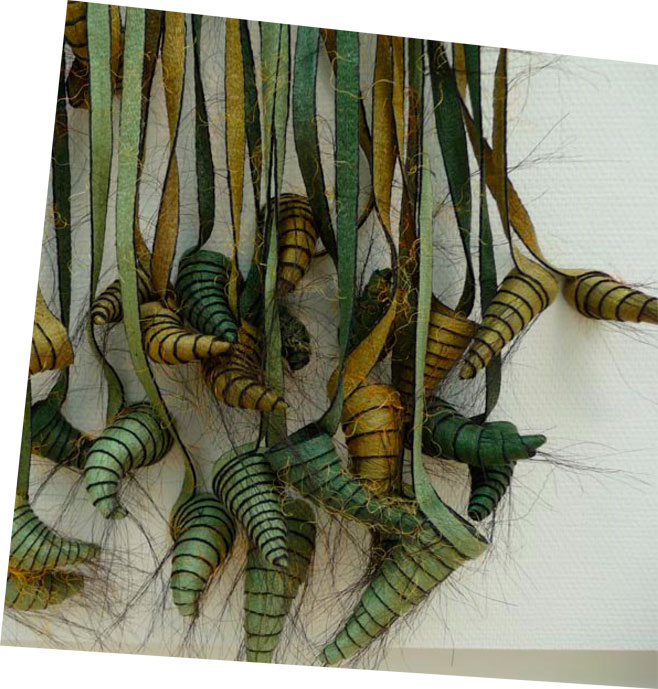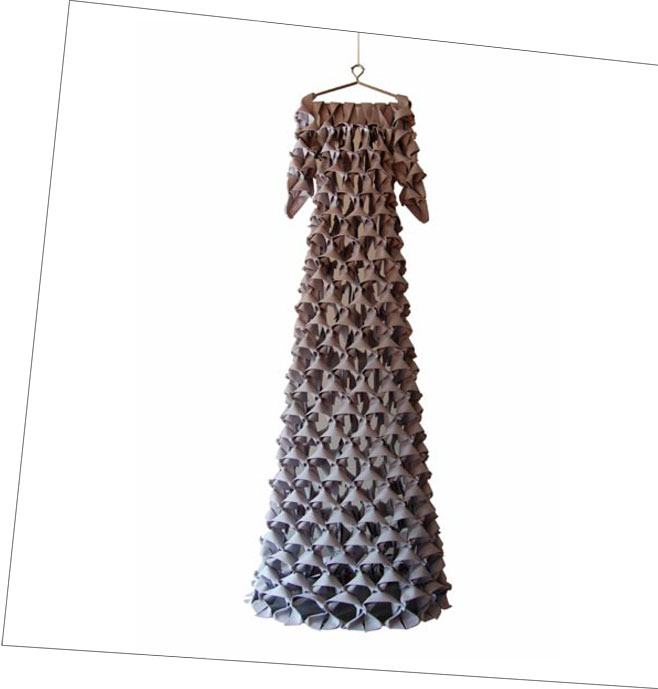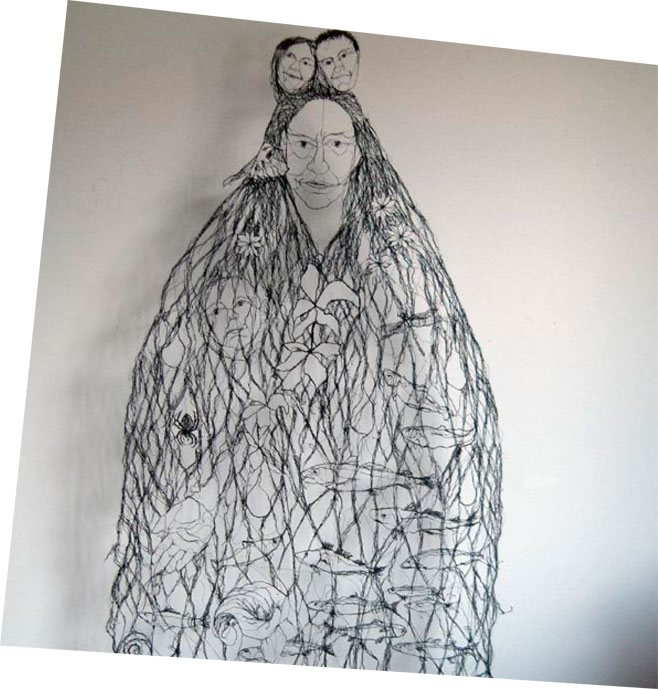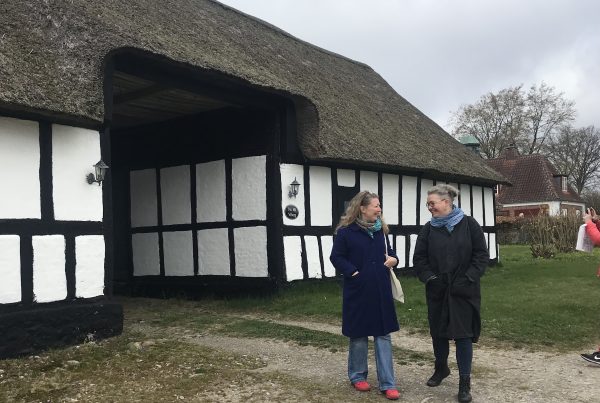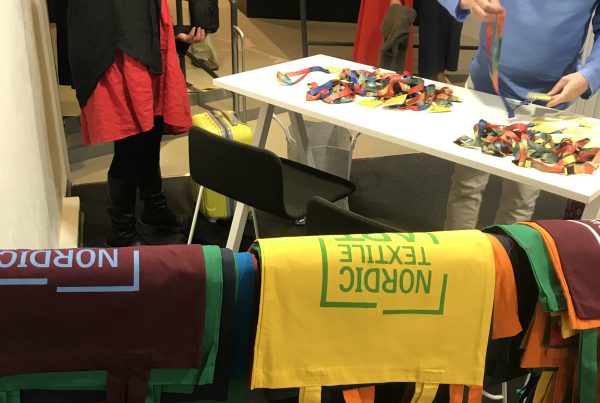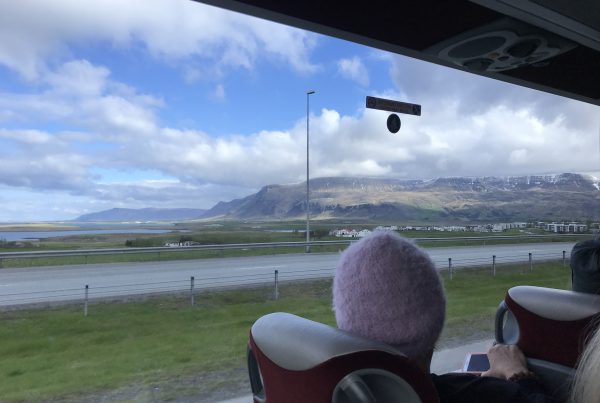Nordic Textile Art, in cooperation with Textilmuseet, are happy to present an exquisite group of artists in the very forefront of new textile expression in the Nordic countries. Enjoy!
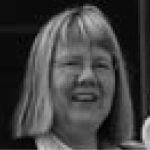
Beatrijs Sterk
Changing Fibres - Textile Art On The Edge
In 1990 Beatrijs Sterk set up the European Textile Network (ETN), which in 1994 became a formal European association under the auspices of the Council of Europe. Currently she is its secretary general. For the ETN, she has been organizing a European conference every second year and has in cooperation created the European Textile Routes projects sponsored by the European Commission. She is also the founder and editor of the magazine Textile Forum.
Nordic textile artists have a great tradition of networking. Not only does every country have its own association of textile artists, designers and craftmakers, but they also cooperate beyond their own borders, and have done so for a long time.
In the 1980s and 1990s, they organised a series of successful Nordic Textile Art Triennials, and for some years they have organised, and obtained sponsoring for, the Nordic Textile Award, the most important textile art prize in Europe. The winner is not only offered a substantial sum of money, but also a solo show at the Borås Textile Museum.
NTA – ON THE BORDERLINE BETWEEN TRADITION AND RENEWAL
A new open association called Nordic Textile Art (NTA) was established in 2006, with the aim of making textile art more visible in the Nordic art scene and providing a meeting place for textile artists. Textile art exhibitions are organised either by invitation or as mini textile exhibitions open to all members. This year, two textile artists each from Denmark, Finland, Iceland, Norway and Sweden were invited to show their work at the Borås Textile Museum in an exhibition entitled ” Changing Fibres”, an allusion to textiles on the borderline between tradition and renewal.
STICKING TO TEXTILES, ACCEPTED OR NOT
Tradition and the avant-garde have always co-existed in Nordic textile art, making it especially interesting. In parallel with their great tradition of woven tapestries, the Nordic countries were among the first to express themselves politically in textiles, and were some of the earliest producers of feminist textile art. There is a perseverance in Nordic textile artists’ thinking that made them stick to textiles at times when other
textile artists in Europe denied having any relationship with textiles at all, hoping to gain acceptance in the world of so-called fine art.
AVANTGARDE STORIES, REDEFINITION
In the Nordic countries, textile artists still use traditional techniques, such as weaving (Grethe Sørensen), embroidery on felted fabrics (Nina Nisonen), felting (Bryndís Bolladottír) or crochet (Anna Eckert and Suvi Suikki), but these works appear very avant-garde due to the stories they convey.
These stories often have a very subtle content, such as the Skin project by Line Kramhøft who reprints large images of three-dimensional skin surfaces on textiles. Her story is about the vulnerability of human beings. Others tell of their own identity, for instance an Icelandic woman who feels wool needs to be redefined (Bolladottír), or express memories and traces of everyday life in textiles (Kari Steihaug). Marit Akslen works with the symbolic value of clothing, expressed in metaphors. Several artists simply reflect on nature, which plays such an important part in their lives (Olof Einarsdottír), while others produce work that expresses emotions, combined with nature themes (Ulrika Berge).
NEW GENERATIONS
Inherent in the Nordic tradition is a strong sense that textiles are about beauty and usefulness, so artists wishing to express the dark side of life were tempted to show this aspect, too. However, Nordic textile artists who criticised society still loved textiles, and knew how to handle them! Thus their art remained in touch with textile materials and techniques, developing more subtle expressions over time. This is especially true for the older generation of textile artists, now well-known. In the current exhibition, we see a fair share of younger artists, educated at various art and design academies and universities in the five countries mentioned earlier, where the older generation teaches. Seeing members of the second and third generation at work is a real joy, and proves that perseverance and dedication produce results for young Nordic textile art.
PARALLELS WITH THE BALTIC
From a personal point of view, I would like to draw attention to the strong parallels that exist between Nordic and Baltic textile art. Networking between these two groups of artists would inspire the ”old” Nordic world with a fresh enthusiasm for textile art, as is typical in places like Kaunas, Lithuania (Kaunas Textile Biennial) and Riga, Latvia (Riga Textile Triennial). The textile art scene would thus receive a positive impetus, not only in the northern countries but also in the rest of Europe.[/twocol_one_last
Johanna Rosenqvist
SIMULTANEOUSLY INTERPRETING ONESELF
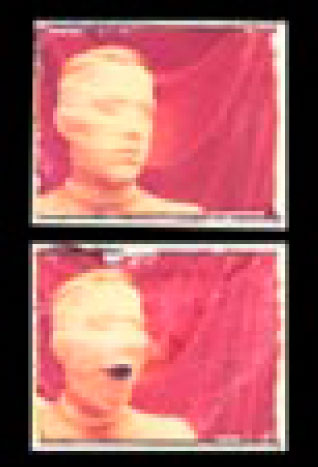
The exhibition Changing fibres presents ten artistic expressions of individual character that collectively function as an indicator of the fine art of balancing on the edge between tradition and innovation.
The artists’ statements together advocate rationality and emotion; tactility and thought; material and technique; nature and culture; the figurative and the nonfigurative; processes of subtraction and addition; innate and acquired knowledge, in works that appear as texts and installations as well as framed pieces and freestanding objects. These aspects are dualistic in nature rather than oppositional. And they correspond with the more specifically textile themes – like dressed or undressed – and actual material appearances in the exhibition – threads drawing contours; the feeling of skin against fabric; hands crocheting – which to a higher degree, but not exclusively, are genre-specific.
The textile fibre is being used as a node that connects and expands the scope of what to include – to find a position from which its possible to stroke against the fur – making, for example, the question of what is beautiful and well done in one context but not in another, not into a conflict betweens generations, but rather a dialogue.
Nordic Textile Art uses the network and the exhibition as venues in which to actually produce textile alongside texts and new contexts. This seems to me a viable means of communication in a multilingual field of practice, a means of simultaneously interpreting oneself.[/twocol_one_last]
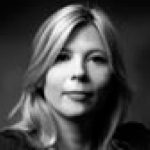 LINE KRAMHØFT
LINE KRAMHØFT
Denmark, Born 1969
line@taktil.dk
Skin is what lies between interior and exterior.
Skin is the part of us that meets the world.
Skin is what we breathe through, skin is time and perishable.
Skin touches and protects.
Skin is sensuous, strong and vulnerable.
Skin opens like the surfaces of a landscape; the folds and movements of skin show where in life we are right now. The skin reflects our lives, gives us character, and although we try to make it younger, softer and smoother, it will keep on changing. It can change colours, become rougher, get chaps and depths. The ideal about how the skin should look is being challenged by the body’s own processes.
In this exhibition man’s skin is the source of inspiration, and through photo enlargements the back of an old woman’s hand and a young person’s foot will be expressed on large, three-dimensional textile surfaces.
The purpose is to make the fabric alive, make it breathe and tell a story. By means of movable illumination the final expressions as well as the works in their own right transform themselves from underplayed photographic expressions into a series of more clearly patterned reliefs. The boundary between textile and skin is being challenged, and the onlooker will feel prodded to touch and sense.
Skin
photo on silk/cotton
260x160 cm
photo: Ole Akerhøj
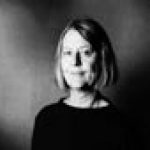 GRETHE SØRENSEN
GRETHE SØRENSEN
Born 1947
gs@textiledesigner.dk
Since 2000 I have been weaving on a loom with digital thread control. At the same time as the digital loom has widened the possibilities to weave far more complex and varied atter, a quite new world of motifs has also become accessible – computergenerated images.
Two works selected for this exhibition are from a comprehensive digital textileproject – Interference. With the work “Image in a state of flux” made of perforated steelsheets, I want to offer a ”live” experience of the elusive optical phenomenon, which has been the inspiration and starting point for a series of tapestries. “Doubleportrait” is one of these tapestries. The perforated pattern on the steelsheets is identical to the one I used in the computer for constructing the digital motifs.
Spekter was my first work woven with 8 weftcolours on a black and white warp. This work has complementary colours on either side.
Double portrait 2004/Interference nr 2
warp- and weftfaced satin with two wefts
handwoven with digital thread control
140x290 cm
photo: Ole Akerhøj
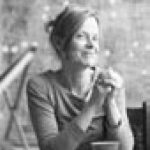 NINA NISONEN
NINA NISONEN
Finland
Born 1956
nina.nisonen@luukku.com
www.finnishdesigners.fi/open/ninanisonen
I work mainly by felting wool lightly and adding to it gauzy linen or jute to create painterly, layered surfaces, “wool paintings” where a thin wool layer covers only partly the coloured fabric beneath. The working process is very meditative and the experience of colour most important.
On the other hand I make slightly thinner and plain “wool sheets” that I work further on by sewing on them my ideas in the same way as I draw sketches into my notebook. I am observing both myself and those around me with a sense of humour. At the moment I am working with monkey-like figures that represent different moods. The Monkey is my alter ego but it can also be a self-portrait, a reflection.
Trapped
felting on linen and sewing by hand
46x56 cm
photo: Pertti Nisonen
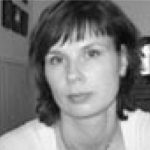 SUVI SUIKKI
SUVI SUIKKI
Finland
Born 1965
suvi.suikki@kolumbus.fi
In my works I explore the ease and difficulty of being a human. They are pencil drawings, combining with crochet. I use crochet to accentuate, to emphasize or to bring something new into the picture. I crochet freely, not using traditional patterns.
My works are fairly small, but they form almost always series.
Also the paper I use adds to the atmosphere and content of my works.
My figures are often partly human, partly animal. I am interested in small affairs and observations, which however build up into unexpected meanings and thoughts. I often try to show a feeling or memory once experienced in a passing moment. My pictures are poetic and narrative without being illustrative.
Good Thoughts
drawing and crochet
100x50 cm
photo: Johnny Korkman
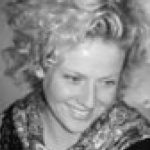 BRYNDÍS BOLLADÓTTIR
BRYNDÍS BOLLADÓTTIR
Iceland
Born 1973
bbolla@simnet.is
Wool and I have always been on good terms, we seem to speak the same language. The wool is a big part of our Icelanders identity, but at the same time I feel a great urge to redefine how it is presented.
I have a passion for making patterns, in particular fine drawings through which I intend to give a new dimension to the wool.
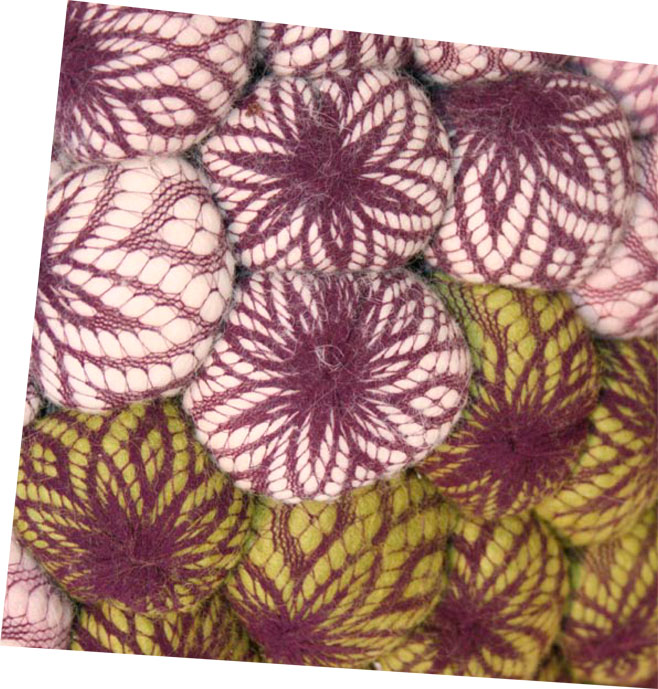
Growth
wool and fiber felted in balls, sewed together
and glued on a material filled with styrofoam
44x44x44 cm
photo: Karen Þora
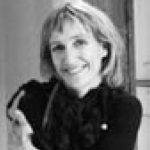 ÓLÖF EINARSDÓTTIR
ÓLÖF EINARSDÓTTIR
Iceland
Born 1959
ollaeinars@gmail.com
Most of my works reflect a strong connection to the various parts of the Icelandic nature, which has always been an essential part of my life.
They are more created out of feelings and emotions rather than logic and calculations although due to the technique I use, form and symmetry is very important.
Growth
cardweaving
40x200x8 cm
photo: Sigrún Einarsdottír
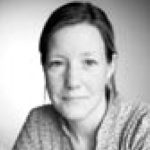 MARIT HELEN AKSLEN
MARIT HELEN AKSLEN
Norway
Born 1971
marit@akslen.net
I received my education at the National College of Art and design in Bergen, Department of Specialised Art, Section of textiles where I majored spring 2000.
Through my work I seek to express something about social layers, power and the abuse of power, and I have found it purposeful to use clothing or parts of clothing as my artistic material. Employing e.g. collars, pockets and cuffs, men´s white shirts, have been central in many of my works.
I have reassembled these fragments into other contexts in which they can effect new meaning. In addititon it has been of importance to me to treat these topics with some focus on gender.
Primarily, I create my works using a collage technique in which several types of materials are combined with the textiles. It is the individual idea which defines the expression, form and technique I use in the resulting work. Consequently some of the works can be characterised as sculptures whereas others are more like carpets or installations.
Grey Dress
button(ed) up collars
230x75x85 cm
photo: Marit Akslen
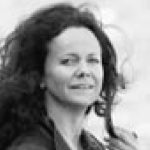 KARI STEIHAUG
KARI STEIHAUG
Norway
Born 1962
post@karisteihaug.no
Kari Steihaug works in the space between adding and taking away, between that which can be seen, and that which exists only as traces and memories. In her art, an awareness of something both fragile and violent is attended to. Clothing is unraveled, a dress slowly vanishes, and semi-metamorphosed garments exist precisely between the tangible and the undefined, the somewhat uncomfortable other.
She works with a material world, and the material world of her art involves many kinds of textiles.
One might say that she most of all makes use of the textiles that are connected to concrete and immediate aspects of everyday life.
She shows us that the concrete can simultaneously be a bearer of something immaterial, sacred, and poetic. Perhaps we can call it a reminder of transitoriness, of the multifaceted nature of what it is to be human.
When I think about her works, however, it is by no means well-formed and finished objects that come to mind. I immediately think of threads and strings and piles of unraveled yarn, of the remains of textiles.
Anne Karin Jortveit
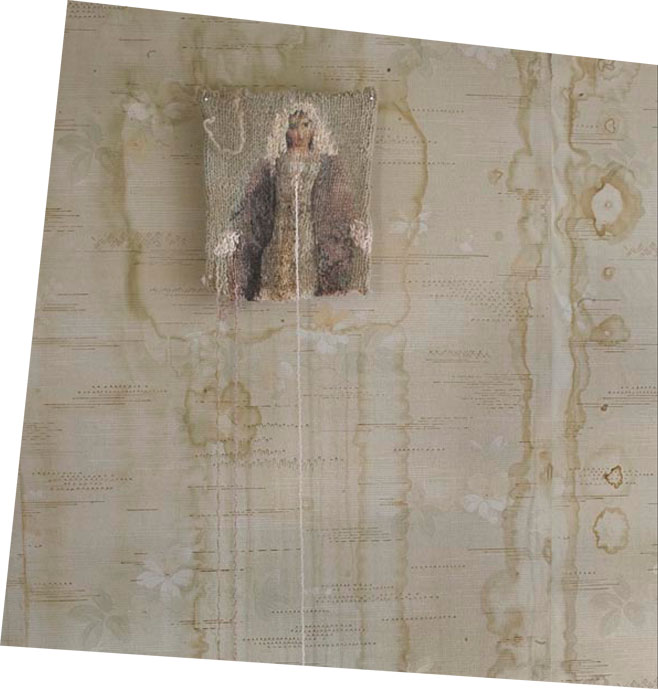
Madonna with open arms nr 5/7
from the series Connection
knitted picture/unraveled clothes
160x45x45 cm
photo: Odd Furenes
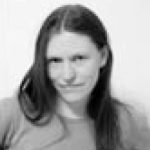 ULRIKA BERGE
ULRIKA BERGE
Sweden
Born 1973
ulrika.berge@gmail.com
My work is about emotions. I use my own life as starting point and let things evolve.
The expression of faces interest me. And the relationships between us all.
Ordinary sewing thread is my material. I sew it together with itself. It becomes a drawing in the air. Transparency, light and shadow are important parts of my work.Watch the slow movement of a sea of flowers. Notice how they turn towards each other. Do they say hello?”
WITHIN.
Selfportrait. A portrait of what´s going on inside.
Does the hummingbird whisper something in my ear or does it suck nectar from my head?
The couple on my head – are they a trophy or something I have hard work balancing?
Within
sewing thread
170 x 70 cm
photo: Ulrika Berge
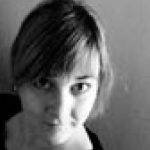 ANNA ECKERT
ANNA ECKERT
Sweden
Born 1976
anna.eckert@passagen.se
My works are based on crocheting.
Stitch by stitch joined together, piece by piece linked together. It builds, growing bigger.
In the same way we meet, intertwine and are shaped by each other.
What has our genetic heritages for importance for who we are?
The biological world and it´s design expressions inspires me as I look into my own history trying to understand my choices. The thread
becomes a joining link in my search…
In the work “grandma, mum and I” three pairs of hands crochets, in an eternal movement – the heritage is passed on, generation to
generation.
Crochet is infinite...
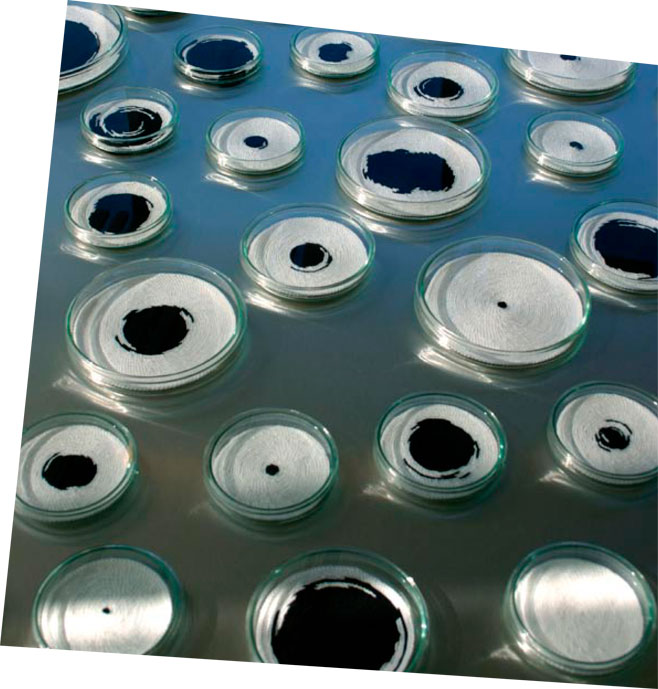
Cultura
crocheted cotton thread in lab bowls
70 items
photo: Anna Eckert
Exhibit Design: Elisabeth Brenner and Malena Karlsson
Tack till:
Västar Götalandsregionen
Kulturkontakt Norden
Svenssons Markpelle
Clara Lachmanns Stipendiefond
Estrid Ericsons Fond
Letterstedska Föreningen
